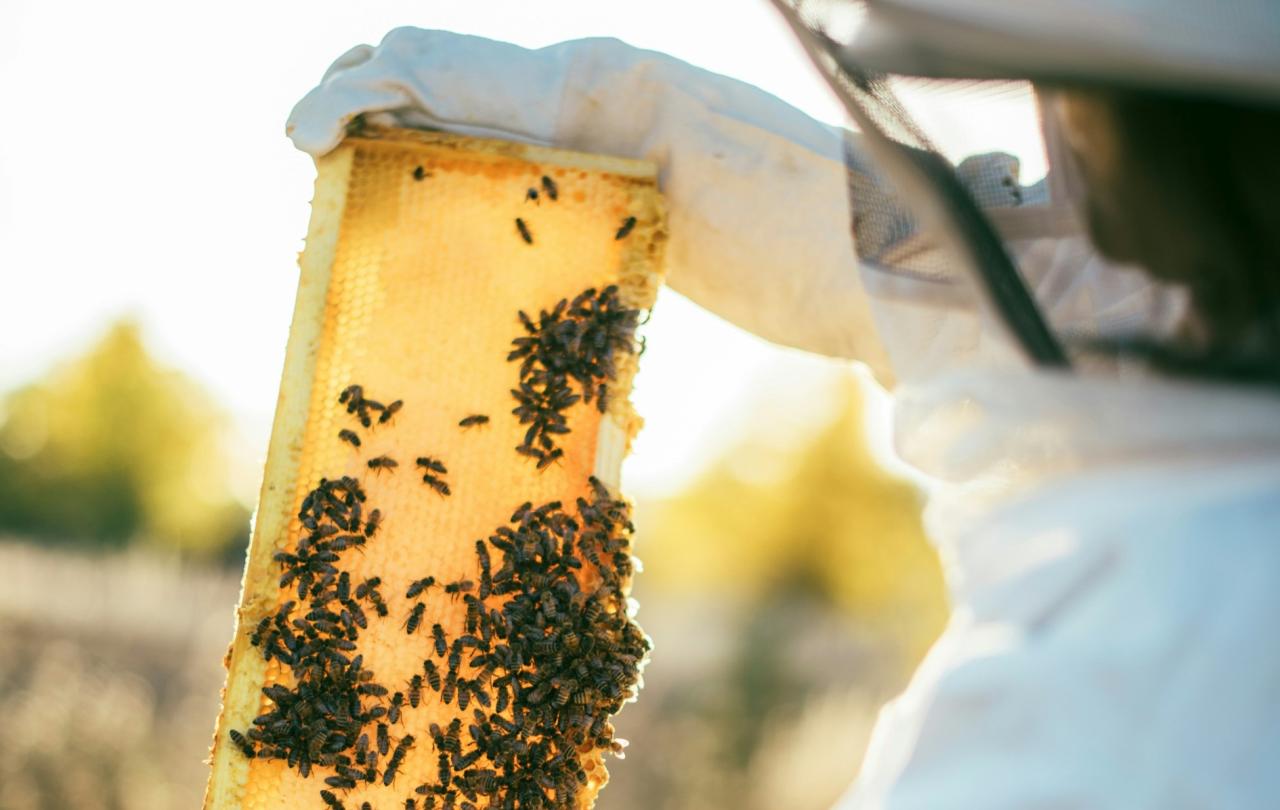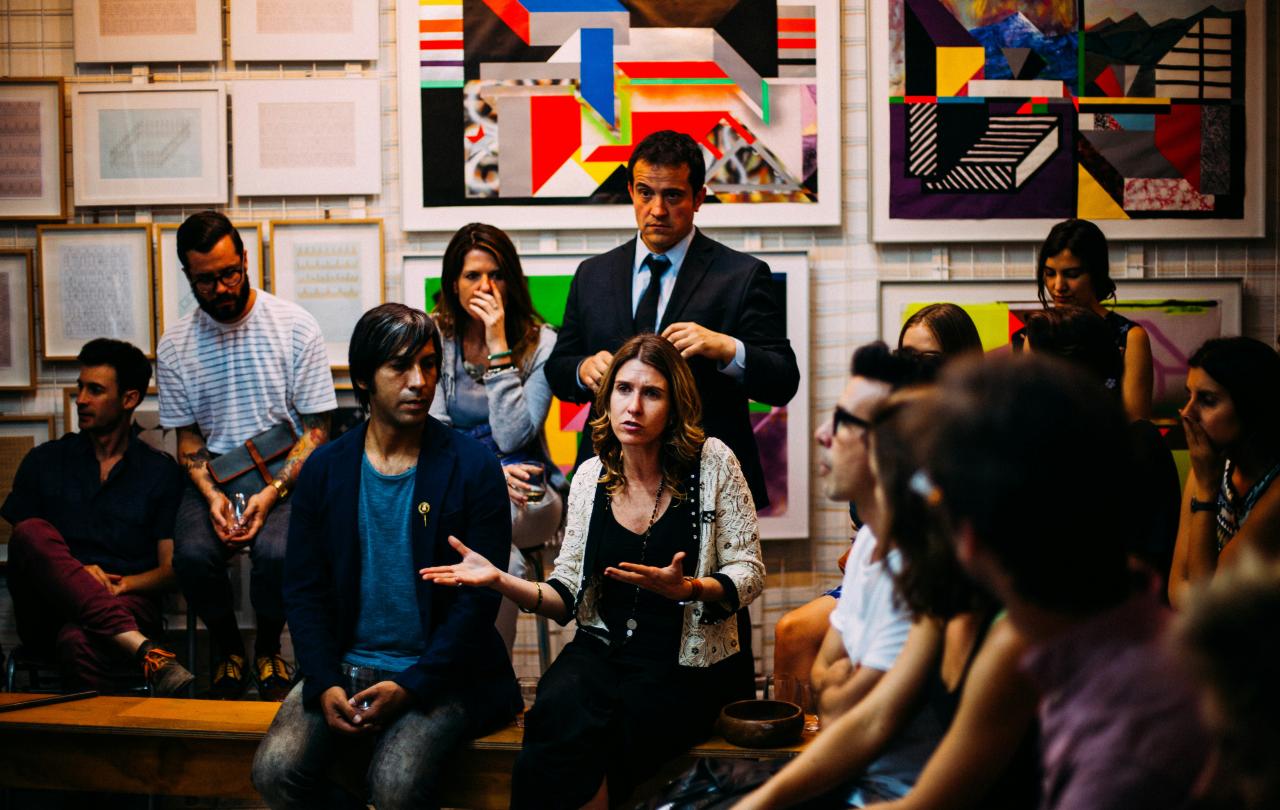
‘Be like the bees’ we hear not infrequently. These furry hive dwellers have been coopted by many, from socialists to capitalists, to put a point across. One party draws on their social structure as an inspiration, another their worker bee ethic. They are indeed an example to us. And yet at the same time, bee communities do things that we would find reprehensible in fellow humans. Male bees are expelled from the hive when they are no longer considered reproductively useful. The bees we see out and about this summer are often the oldest, sent to do the dangerous foraging work because they are considered the most expendable. This was a jarring discovery for me, reading it in Katherine May’s timely book, Wintering, during the first COVID-19 lockdown. I was one of the millions shielding and being protected by the ways that society shifted to serve the most vulnerable to the virus; bees, I had just learned, would not behave like this. There are some limits, it seems, to the lessons we construct from nature.
For we do love to construct them. Spend a moment on LinkedIn or Substack, and there are a multitude of articles drawing lessons from the world around us and the creatures we share it with.
This impulse is not new; throughout history, people and communities have done this. People’s relationship with nature is not static or homogenous. The wilderness has been variously a place of fear to be avoided, of growing wonder as described by the Romantic Poets, a site of knowledge neglected by those in power but maintained by others, often women and indigenous communities.
What strikes me about the current trend is that it seems to push to an extreme of unquestioning veneration: nature is perfect and our whole teacher. There are posts about perfect harmony we should emulate, or a call to copy an endless adaptability. These are the things that we might long for – but do not seem to be borne out in ecosystems where sea urchins demolish kelp forests, and the climate crisis reveals the limits of species to adjust. We are being called to see what we want (or feel we need) rather than what actually exists in the world around us.
This instinct to carve lessons from creation extends beyond the natural world to the work of human hands. The Japanese art of kintsugi, repairing broken pottery with gold, has become increasingly prevalent as a metaphor for healing; a beautiful idea but one that risks being stripped of its culture, and that has both limitations and dangers. In Sarah Perry’s novel, The Essex Serpent, Cora’s husband Michael masks his abuse by speaking in a romantic metaphor of his intention to break her down and mend her with gold, like the Japanese art in their hallway. But Cora is not a vase; she is woman. Michael’s breaking harms her. She only begins to repair after he is gone; it is messy, some parts seem irrevocably changed. I think of my own losses, and how healing is indeed available, but rarely as straightforward as putting the same pieces back together. To think it is so can hinder our restoration, and miss out on the transformation that may be possible. As the journalist Poorna Bell wrote after her husband’s death by suicide: “I was in some ways sadder, wiser, but also my existence was much bigger, more honest.”
We have a great capacity to learn – and we need it to survive. As writer Andy Crouch put it in his book, Culture Making: “a human baby is the strangest and most wonderful creature this world can offer. No other mammal emerges so helpless from the womb, utterly unable to cope with the opportunity and adversity of nature. Yet no other creature holds such limitless possibility… We are hard-wired for nothing but learning. All we begin with are possibilities.”
This ability to grow and understand and change is essential if we are to navigate the world. And in our encounters with this place, with brokenness and confusion, the instinct to make meaning, to tidy, to be able to point to something and say 'this is how we should be’ is a form of comfort. Maybe even control it. We are grappling with not just how to understand the world, but how to be in it.
If we are always looking for the lesson, we devalue nature by prizing it just for what it can give us.
Creation and creativity have much to teach us – they’re a testament to and the fruit of the imagination of God. But to prize them just for their lessons seems to fall into another form of extraction and to miss out on something else, something that may be a greater gift in this messy world: wonder.
Bees moving from flower to flower are not setting out on their mission with a side hustle of education for the human race. They are being their full bee selves. Nectar is necessary; this is how it is collected. Bees share knowledge about the good plants via a ‘waggle dance’. This is how the colony persists. It is not for my benefit (though it may encourage me to a moment of playfulness).
Writing this on my balcony, I pause when I see dozens of birds circling one thermal; a moving column of gulls and red kites that goes up and up and up. I could strive for a teachable moment (maybe something about co-existence?) but it feels not just unnecessary, but an interruption. In that moment, I was a human being in awe of birds riding the warm air; that feels like something full of beauty in itself. I worry that if we are always looking for the lesson, we devalue nature by prizing it just for what it can give us. And we miss out on the opportunities to marvel at creation itself.
And, in calling each other to be like other creatures, we accidentally dehumanise other people and ourselves. In the face of conflict, polarisation and disconnection, to contend for each other’s humanity feels vital. And to recognise our own humanness is to acknowledge our limitations. There are parts of nature currently beyond our comprehension. Birdsong holds complexity heard by the intended audience but we can only guess at its meaning. There is something to accepting the edges of our own understanding. Sometimes we touch on truths that seem to contradict or be in tension. Perhaps they are layers that we cannot intellectually fit together but that build up a fuller, richer story that resonates in our souls. Glimpsing something of the multifaceted wisdom and wonder of God himself – and that helps us to remember who we are. A particular type of creature: a human.
So, I won’t be a bee. I’ll keep trying to learn to be what I am: a particular human in a bigger community, world and story. Now, I’m off to admire the goldfinches, glinting in the sunshine.
Support Seen & Unseen
Since Spring 2023, our readers have enjoyed over 1,500 articles. All for free.
This is made possible through the generosity of our amazing community of supporters.
If you enjoy Seen & Unseen, would you consider making a gift towards our work?
Do so by joining Behind The Seen. Alongside other benefits, you’ll receive an extra fortnightly email from me sharing my reading and reflections on the ideas that are shaping our times.
Graham Tomlin
Editor-in-Chief





